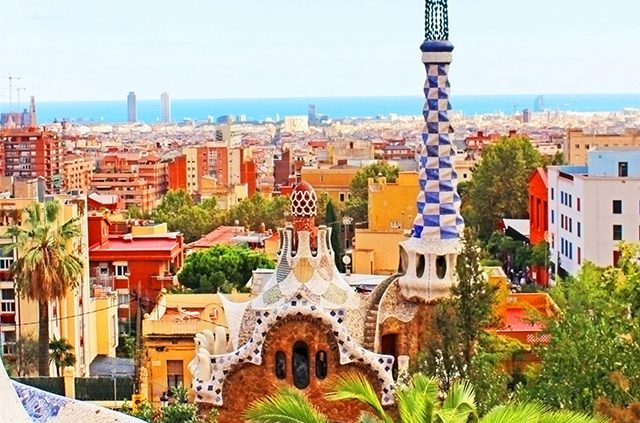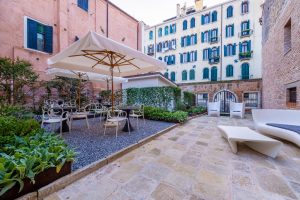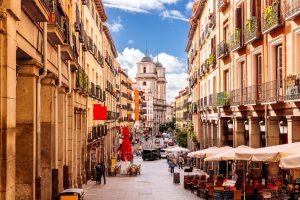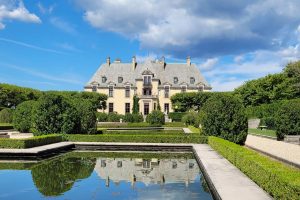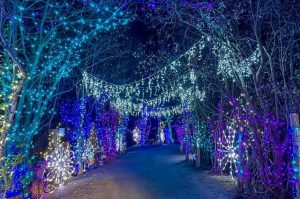I’ve always longed to live in the Mediterranean metropolis of Barcelona. One of Europe’s most stylish cities, it’s an architecture lover’s paradise where Gothic spires share space with the otherworldly designs of Antoni Gaudi.
And it is Gaudi – and the food – that brings me here. Fascinated by architecture and well-versed in the world’s cities where it reigns supreme (like Stockholm, St. Petersburg, and Tallinn, Estonia), I cannot help but be drawn to the capital of Spain’s Catalonia region and its beautiful ironwork balconies, colorful facades and Gothic towers.
But ultimately, I come to see Gaudi, the Modernist architect whose Sagrada Familia remains under construction in Barcelona nearly a century after his death. Designed with God’s creation in mind, the cathedral’s towering columns emulate trees, with leafy bowers skimming the ceiling and bolstering the nave.
Finding Gaudi
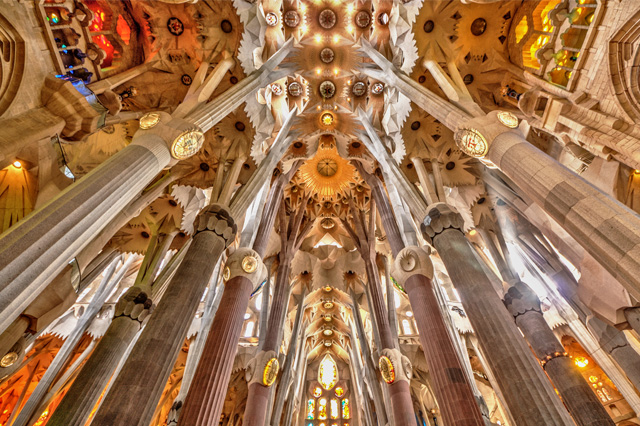
Gaudi is so revered here that some have lobbied for his beatification. And it’s no wonder: The Sagrada Familia’s cloud-reaching spires can be seen from all over the city, and touring its interior is an exercise in looking up for hours. “God’s Architect,” as he was sometimes known, designed seven structures that have been named UNESCO World Heritage sites, many of them in Barcelona.
Be sure to take a ramble along Passeig de Gracia. The boulevard is lined with extravagant mansions, including Gaudi’s Casa Calvet and the aptly named House of Spikes, Casa de les Punxes. You’ll find it in L’Eixample, a 19th-century neighborhood built as an extension to the old city.
Gaudi’s most significant patron was industrial tycoon Eusebi Guell, for whom he designed Palau Guell. The mansion features a signature parabolic entrance gate and central hallway with tiny windows in the ceiling that resemble a starlit sky.
Another Gaudi creation – the curved apartment building christened La Pedrera (“open quarry”) – is famous in large part because of its ruled surface design, which results in a structure with no apparent straight lines. The highlight of the building is the rooftop with its undulating surface and 26 chimneys that resemble nothing if not, perhaps, the surface of Mars.
Finally there is Gaudi’s Park Guell, which, like Sagrada Familia, has become synonymous with Barcelona. Storybook-like and whimsical, the park features entrance pavilions with ice cream-emulating rooftops, a tiled-bedecked dragon, and a famous undulating mosaic-covered bench designed by Josep Jujol.
A Foodie’s Delight

Barcelona’s food culture mirrors the diversity and playfulness of its architecture. Here you’ll find restaurants and tapas bars clustered around intimate squares and along cobblestone streets, where even the tiniest cafes serve up palate-pleasing delights.
Be sure to eat like a native and order pa amb tomaquet, which is essentially bread rubbed with tomatoes, garlic and olive oil. And don’t forget the wine. Lunch or dinner, it’s a staple of the meal.
Continue your Gaudi-themed exploration of Barcelona by dining at Casa Calvet on Carrer de Casp. Gaudi designed the building, which features Modernista stained glass. It’s also a perfect spot for trying traditional Catalan dishes like albondigas con sepia y gambas –meatballs with squid and prawns.
Be mindful of traditional siesta time. Most shops open mid-morning, then close in the early afternoon for lunch, reopening at 4 or 5 p.m. And Spaniards dine late. In fact, many restaurants don’t open for dinner until 8 p.m.
Beauty Reborn
While you can certainly spend the night in one of Barcelona’s many luxurious hotels, consider a lodging experience that allows you to live like a native, perhaps in El Born, which borders both the Gothic Quarter and Port Vell. Here you can rent a walk-up with your own private balcony overlooking the narrow streets below, and sample small plates and Catalan wines within the quarter’s many tapas bars come nighttime. Santa Maria del Mar, a fine example of Catalan Gothic architecture that regularly hosts concerts, is also located in the trendy neighborhood. Try the tiny tapas bar across the street – La Vinya del Senyor.
Barcelona’s best-loved park, Parc de la Ciutadella, is located on the eastern edge of El Born. Its treasures include a wild fountain, designed by Gaudi and Josep Fontsere, as well as a beautiful boating lake and the city’s zoo. A stroll through this fanciful landscape is a perfect way to close the day in Barcelona, the city to which Gaudi sought to bring so much of the forms and symmetry of nature via the medium of design. As an elderly man, the architect wrote, “I captured the purest and most pleasant images of nature, that nature that is ever our Mistress.”

